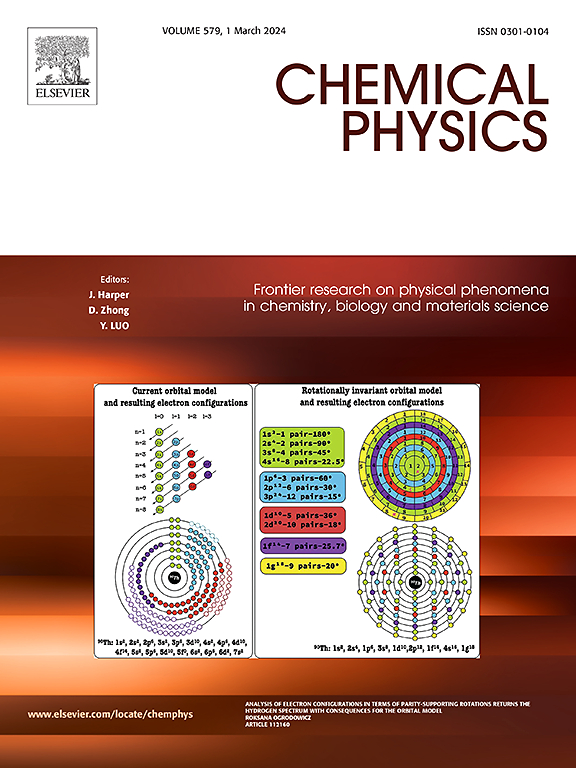Influence of electrodes in enhancing the thermoelectric performance of Mn-Cn-Mn (n = 7) molecular chain
IF 2.4
3区 化学
Q4 CHEMISTRY, PHYSICAL
引用次数: 0
Abstract
The present study enlightens an in-depth investigation into the comparative analysis of thermoelectric performance between g-and graphene electrodes with a molecular chain of Mn-Cn-Mn (), a one-dimensional (1-D) thermoelectric system as the molecular channel. The study explores the critical factors influencing the figure of merit (ZT) and the overall thermoelectric behaviour of these systems. Results demonstrate that at lower temperatures an efficient thermoelectric device with high ZT is obtained with g-electrodes; however, the same is not maintained above 225 K; instead, better and consistent thermoelectric performance at higher temperatures is obtained with Graphene electrodes. Our study therefore highlights the crucial role of the choice of electrodes in deciding final thermoelectric performance. The thermoelectric performance is analysed through the system's temperature dependence of the Seebeck coefficient, electrical conductance, and thermal conductance. It is observed that temperature dependence of Seebeck coefficient (S) has a direct impact on ZT variation. The high thermal conductivity (k) along with low S of graphene electrode is responsible for relatively lower ZT despite large higher electrical conductivity (Throughout the range of temperature variation, the electronic part of thermal conductivity (k) is found to be weaker than the phononic part in both systems.

电极对提高Mn-Cn-Mn (n = 7)分子链热电性能的影响
本研究为g- c4n3与以Mn-Cn-Mn (n=7)分子链、一维(1-D)热电系统为分子通道的石墨烯电极的热电性能对比分析提供了深入的研究。该研究探讨了影响这些系统的性能值(ZT)和整体热电行为的关键因素。结果表明,在较低温度下,采用g- c4n3电极可获得具有高ZT的高效热电器件;然而,在225k以上,情况就不一样了;相反,石墨烯电极在更高温度下获得更好和一致的热电性能。因此,我们的研究强调了电极的选择在决定最终热电性能方面的关键作用。通过塞贝克系数、电导率和导热系数对系统温度的依赖性分析了热电性能。塞贝克系数(S)的温度依赖性对ZT的变化有直接影响。石墨烯电极的高导热系数(k)和低S是导致相对较低ZT的原因,尽管电导率(Ge)很高。在整个温度变化范围内,两种体系的导热系数(k)的电子部分都弱于声子部分。
本文章由计算机程序翻译,如有差异,请以英文原文为准。
求助全文
约1分钟内获得全文
求助全文
来源期刊

Chemical Physics
化学-物理:原子、分子和化学物理
CiteScore
4.60
自引率
4.30%
发文量
278
审稿时长
39 days
期刊介绍:
Chemical Physics publishes experimental and theoretical papers on all aspects of chemical physics. In this journal, experiments are related to theory, and in turn theoretical papers are related to present or future experiments. Subjects covered include: spectroscopy and molecular structure, interacting systems, relaxation phenomena, biological systems, materials, fundamental problems in molecular reactivity, molecular quantum theory and statistical mechanics. Computational chemistry studies of routine character are not appropriate for this journal.
 求助内容:
求助内容: 应助结果提醒方式:
应助结果提醒方式:


